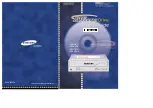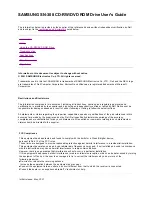
24
FREECOM Traveller II Series
GB
6
Green Book
Specification for CD-I.
High Sierra/High Sierra Format
The Hotel in Nevada, USA where in 1985 the foundation was laid for determining
the file systems for CDs. The efforts of the group which came to be known as
the "High Sierra Group" led to the standard ISO 9660, the most common file
system for CDs. A CD that conforms to this standard is at times still referred to
as a "High Sierra" CD. The original High Sierra format has almost died out; as a
rule, ISO 9660 is used instead.
Image File
see physical image
ISO 9660
ISO 9660 describes the requirements a CD file system has to fulfill. This allows a
CD to be used universally.
Only the capital letters from A to Z, the digits 0 to 9 and the underscore symbol
are permitted for file and directory names. Diacritical marks (Ä, Ö, Ü), foreign
characters and punctuation marks (ß, ?, ! etc.) as well as hyphens are not
permitted. The filename can have a max. of 8 characters, the extension only up
to 3. The filename must be at least one character in length, for example 'A'. A
version number (1 to 32767) can be appended (for example 'A.B;1'). A maximum
directory hierarchy of eight levels is permitted whereby the root is considered
the first level. The ISO 9660 employs specifications of the High Sierra Group
and is for that reason also called the High Sierra format. There are also other
file systems ( for example, Joliet for Win95 or HFS for Apple Macintosh) which,
however, can only be recognized on these types of systems.
Joliet
CD file system that supports long filenames and can be used under Windows
95. For full compatibility to DOS, an ISO 9660 file system must be created. This
is a part of the complete Joliet system.
Lead-In
The lead-in is a data area at the beginning of a CD-R session. This area contains
the directory (table of contents TOC) of a session. The lead-in is written together
with the lead-out of a session. Every lead-in uses 4500 sectors (approx. 9 MB) on
the CD.
Lead-Out
The lead-out marks the physical end of a session and does not contain any data.
It is written together with the lead-in. The first lead-out of a CD uses 6750 sectors
(approx. 13 MB), all following ones 2250 sectors (approx. 4 MB).




































